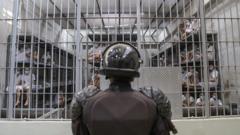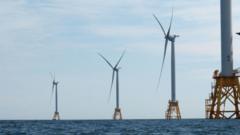Recent federal spending cuts have raised concerns about the ability of the Alaska Volcano Observatory to monitor Mount Spurr and other volcanic activity. With potential disruptions to telecommunications and fieldwork, experts warn of risks to aviation safety and local communities.
Federal Spending Cuts Threaten Volcano Monitoring in Alaska

Federal Spending Cuts Threaten Volcano Monitoring in Alaska
The Trump administration's budgetary restrictions may jeopardize critical volcano monitoring efforts at Mount Spurr and other sites in Alaska, including telecommunications and field operations.
The rumbling activity at Mount Spurr, located northwest of Anchorage, prompted the Alaska volcano monitoring agency to increase its alert levels starting in October. This measure was designed to ensure that nearby communities and aircraft receive timely warnings of any potential eruptions. However, recent spending cuts initiated by the Trump administration pose significant risks to these crucial monitoring operations.
Workers at the U.S. Geological Survey's Alaska Volcano Observatory have reported that their company credit cards have been frozen, jeopardizing essential travel and operational expenses, including the telecommunications services vital for transmitting real-time monitoring data. Failure to fund these communications could disrupt the observatory's ability to provide warnings regarding volcanic activity, leaving communities unprotected.
Fieldwork, critical for maintaining and repairing monitoring equipment located in remote, challenging terrains, is also in jeopardy. Experts warn that losing monitoring capabilities could result in dire consequences. Jeff Freymueller, a geophysics professor, highlighted the potential for disaster if aircraft were to encounter volcanic ash clouds, reminding us of past aviation incidents linked to unmonitored volcanic ash.
The executive order recently signed by President Trump allows the Department of Government Efficiency, overseen by Elon Musk, to scrutinize federal spending even further. While exceptions are made for disaster relief services, the current restrictions affecting the Alaska Volcano Observatory do not appear to have been exempted.
Despite the budget uncertainties, the observatory continues to monitor Mount Spurr, which has exhibited signs of increased seismic activity, along with visible steam emissions. Another volcano in the region, Great Sitkin, remains on an even higher alert level, signaling ongoing volcanic threats in Alaska's volcanic landscape.
The situation highlights the intersection of government budget policies and public safety, raising questions about the balance between fiscal responsibility and the need for adequate disaster preparedness.





















